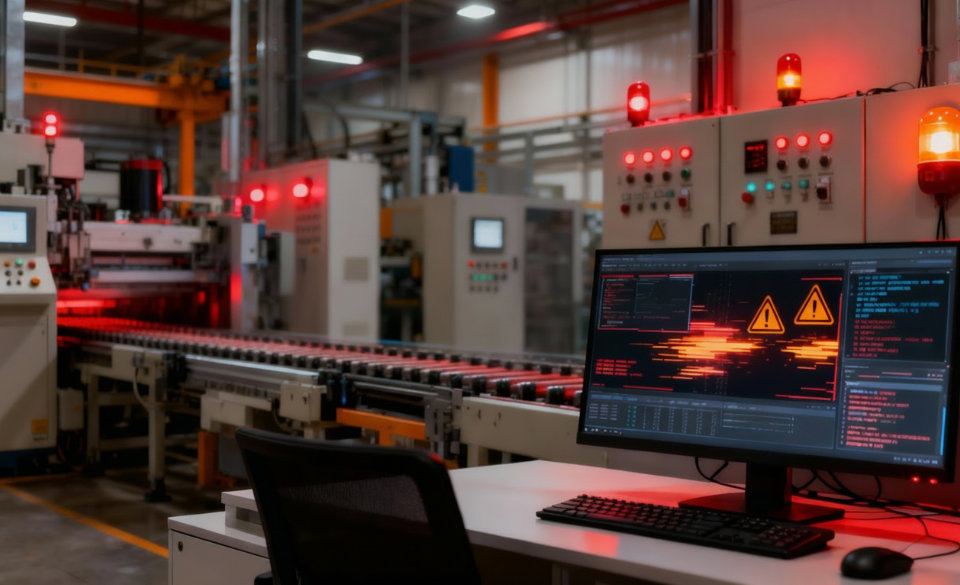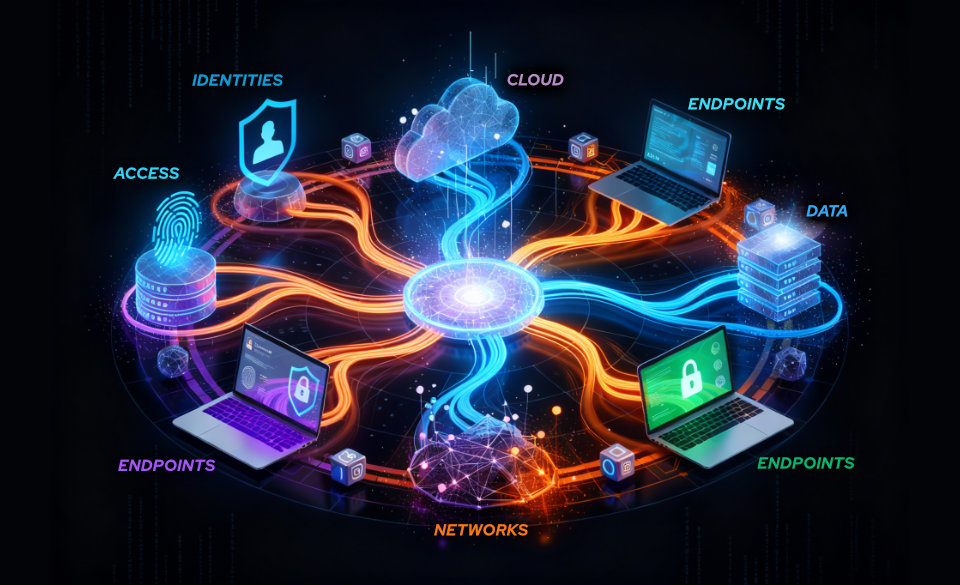
Quantum Computing and Cybersecurity: The True Great Revolution
27 de March de 2025
Zero Trust Network Access (ZTNA): Everything You Need to Know
10 de April de 2025Photovoltaic plants are at the forefront of the transition to cleaner and more sustainable energy sources. However, with the increasing digitalization and interconnection of their systems, cybersecurity in these infrastructures is more crucial than ever. A failure in cybersecurity not only jeopardizes the plant’s operability but also the stability of the electrical system as a whole, as well as the protection of sensitive data.
In this post, we will explore cybersecurity in photovoltaic plants, with a special emphasis on the security of Operational Technology (OT).
Cybersecurity in Photovoltaic Plants
Photovoltaic plants comprise a complex network of equipment and systems, such as solar panels, inverters, control and monitoring systems, and, in many cases, energy storage solutions. All these elements are interconnected with each other and with external systems, creating a network vulnerable to cyberattacks.
Common Cyber Threats in Photovoltaic Plants
- Unauthorized Access to Control Systems: Cybercriminals may attempt to access SCADA (Supervisory Control and Data Acquisition) systems to alter equipment operation, potentially compromising plant efficiency or even causing damage to assets.
- Ransomware: Photovoltaic plants, like any other critical infrastructure, can be targets of ransomware attacks. Hackers can encrypt vital data and demand a ransom to release it, which could paralyze plant operations.
- Supply Chain Attacks: As photovoltaic plants rely on third-party equipment, attacks targeting suppliers or device software can introduce vulnerabilities into the infrastructure.
- Data Manipulation: Production and performance data are crucial for decision-making. Manipulating this information could result in poor decisions affecting the plant’s production and profitability.
OT Security in Photovoltaic Plants
The security of Operational Technology (OT) is one of the major concerns in the field of industrial cybersecurity, and photovoltaic plants are no exception. OT systems control the physical operation of equipment in the plant, from adjusting solar panels to monitoring inverters and energy storage batteries.
Characteristics of OT Systems
- Connected Devices: Industrial devices in a photovoltaic plant, such as inverters and sensors, are interconnected to enable remote monitoring and control.
- Legacy Protocols: Many OT systems operate with older protocols, such as Modbus or DNP3, which were not designed with modern cyber threats in mind.
- Critical Operations: OT systems not only control energy production but are also involved in the management of energy distribution and storage. A successful attack on these systems could affect the stability of the electrical grid.
Challenges in OT Device Security
- Legacy Protocols: Many OT devices in photovoltaic plants use older protocols, such as Modbus, DNP3, or Profibus, which were not designed to face modern cyber threats. These protocols often lack robust encryption and authentication mechanisms, making them easier for cybercriminals to exploit.
- Connection to the IT Network: In many photovoltaic plants, there is an interconnection between the OT network and the IT network, which can be an entry point for attackers. This lack of segmentation between IT and OT networks increases the attack surface, allowing an attack on the corporate network to affect industrial control systems.
- Lack of Real-Time Visibility and Monitoring: The lack of adequate tools for real-time monitoring of OT networks can hinder the early detection of cyberattacks. This is critical because cyber threats can go unnoticed for a long period, increasing the risk of damage.
- Devices Connected to the Internet: Many OT devices are connected to the Internet or external networks to allow remote monitoring or integration with energy management platforms. This exposes the photovoltaic plant to additional risks, such as ransomware attacks or unauthorized access.
Solutions to Improve OT Device Security in Photovoltaic Plants
- Segmentation of IT and OT Networks: A key strategy to mitigate risks is the segmentation of IT and OT networks. Ensuring that industrial control systems are isolated from corporate networks can prevent cyberattacks from spreading between the two environments.
- Updating Protocols and Security Standards: It is important to update the protocols used in OT devices to include robust authentication and encryption. Implementing modern secure communication technologies can reduce vulnerabilities in the infrastructure.
- Implementation of PAM (Privileged Access Management): Managing privileged access is essential to ensure that only authorized personnel can interact with OT devices. Tools like Cosmikal’s Endurance can help control and audit access to critical systems, minimizing the risks of unauthorized access.
- Continuous Monitoring: Implementing continuous monitoring solutions that provide real-time visibility of all OT devices. This includes the ability to detect anomalies in sensor data, device failures, and unauthorized access.
- Multi-Factor Authentication (MFA): Using multi-factor authentication (MFA) for access to OT control systems is a way to ensure that only authorized personnel can modify the configuration of the plant’s critical systems.
Cybersecurity in photovoltaic plants is crucial to protect both OT devices and the overall operation of the plant. The interconnection of these devices and the increase in digitalization present new risks, but with proper access management, network segmentation, and continuous monitoring, it is possible to mitigate these risks and ensure the safe and efficient operation of the facilities.
Implementing solutions like Cosmikal’s Endurance can be the key to protecting these OT devices against increasingly sophisticated cyber threats.Cosmikal
How Endurance Helps Protect Photovoltaic Plants
Endurance is a comprehensive security solution that, thanks to its hardened remote workspace, PAM, VDI, and DLP functionalities, is the perfect response to these cybersecurity challenges. With its robust design, Endurance offers multi-layered security and also manages and audits access to critical systems within photovoltaic plants. With its ability to secure remote connections and protect sensitive assets through the hardened remote workspace, Endurance significantly minimizes the risks associated with unauthorized access and cyberattacks.
By integrating Endurance, photovoltaic plants can secure their industrial control networks, monitor in real-time interactions with critical systems, and protect the plant’s sensitive data. In this way, not only is continuous operability ensured, but security is also reinforced in an increasingly digitalized sector.
With the growing threat of cyberattacks on critical infrastructures, solutions like Endurance are essential to maintain security, efficiency, and confidence in the energy sector.




